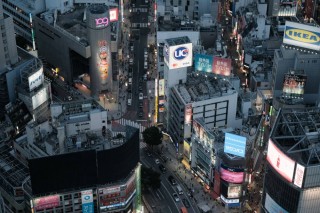Loading
Search
▼ Japan's GDP Shrinks Less Than Feared, Easing Double-Dip Worries
- Category:Other
Japan’s economy shrank less than first reported last quarter, easing concerns over the risk of a double-dip recession as the country struggles through yet another round of restrictions to contain the coronavirus.
Gross domestic product for the January-March period contracted an annualized 3.9% from the final quarter of 2020, the Cabinet Office reported Tuesday in figures that beat analyst forecasts and showed that the world’s third-largest economy weathered a winter wave of the virus better than the government earlier estimated.
With Japan’s latest virus emergency set to last through mid-June, about a month before the planned start of the Tokyo Olympics, economists were looking to the GDP report for any signs of extra weakness that would indicate a heightened risk of another contraction this quarter. They didn’t get that.
"When you see the outlook for the economy, it’s not all bad,” said economist Yoshiki Shinke at Dai-Ichi Life Research Institute. "The pace of vaccination is picking up faster than expected and that’s increasing a chance of robust rebound from the third quarter.”
Separate figures showed wages rose in April at the fastest pace since 2018.
"The larger-than-expected upward revision to Japan’s first-quarter GDP looks good on the outside but — based on the composition — is weak on the inside. One major factor behind the smaller contraction relative to the preliminary reading was an increase in private inventory.
That could unwind in 2Q — making a recession more likely,” said Yuki Masujima, a Bloomberg economist.
Since the start of the year, Japan’s recovery has been put on pause by on-again-off-again declarations of emergency to try to contain virus flareups.
Prime Minister Yoshihide Suga’s administration has walked a tightrope, using narrowly targeted restrictions on restaurants and bars to quell recent outbreaks, but letting most other businesses carry on as normal.
That approach has kept the economy from collapsing like it did last year, but it’s also failed to stamp out the virus. Meanwhile, a vaccine drive that didn’t kick into high gear until recent weeks allowed the crisis to drag on, even if case numbers are still far below U.S. or European levels.
But, even as Japan’s fight with the virus drags on, Tuesday’s report probably didn’t change the consensus among analysts that the economy will manage to eke out growth this quarter. There are also reasons to see a brisker recovery taking off again once virus restrictions are lifted.
Fast rebounds in the U.S. and China are fueling Japanese exports, with domestic factory production in April reaching the highest since a 2019 sales tax hike.
Household spending, which has been creeping up month-over-month since February, shows recovering appetite for consumer durables even if outlays on entertainment and other services are predictably lagging. That suggests a solid bedrock of consumer demand that could underpin growth once the pandemic is finally over.
Meanwhile, virus cases are falling and the vaccine drive is finally kicking into gear. More than 17 million doses have been administered now compared with just a million at the end of March. Most of those shots have come in the last three weeks.
"May and June will likely be bad, but consumption probably won’t be worsening greatly from the first quarter,” said economist Takeshi Minami at Norinchukin Research Institute. "So I believe we’ll be back in positive territory for the second quarter.”
On a nonannualized basis, GDP lost 1% from the previous quarter, compared with the 1.2% fall forecast by analysts.
Nominal GDP contracted 1.3%. Economists had expected a 1.6% drop. Private consumption dropped 1.5% from the prior quarter, compared with a 1.4% fall forecast by economists.
Business investment fell 1.2%, matching the forecast from analysts. Inventories added 0.4 percentage point to GDP, compared with a 0.3 percentage point contribution expected by economists.
Net exports of goods and services subtracted 0.2 percentage point from GDP growth, matching the forecast. A separate report showed labor cash earnings rose 1.6% in April compared with the prior year, double the gain forecast by analysts.
- June 9, 2021
- Comment (0)
- Trackback(0)


